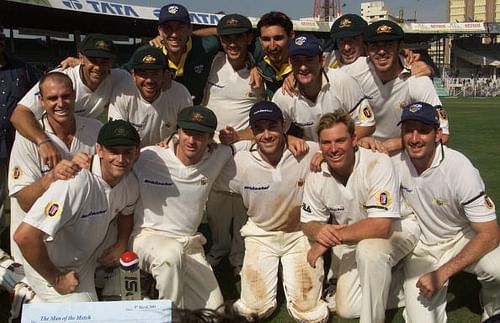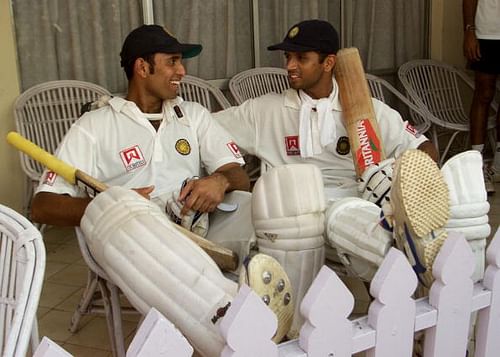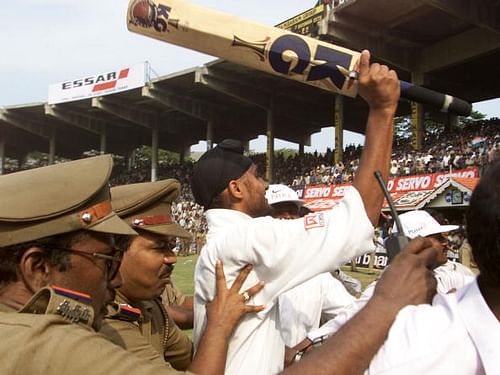
Border-Gavaskar Trophy 2001- A riveting series that glorified Test cricket
Steve Waugh’s Invincibles were on the brink of conquering their ‘Final Frontier’- a Test series win in India after 32 years. After a comprehensive annihilation of the hosts in Mumbai, Australia reached the eastern coast of India, Kolkata, to rewrite history and record their 17th consecutive win in Test matches. Vengipurappu Venkat Sai Laxman’s monumental innings of 281 turned the tide towards India. Harbhajan’s solo star performance with the ball triggered Australian batting collapses in the series. The home team miraculously won the second Test and at Chennai clinched a nail-biter to script a wonderful Test series win that kick-started a Renaissance in Indian cricket.
It was a series between two teams – one settled and confident while the other team was soul-searching, racking their brains and trying to work out the permutations and combinations to challenge the world’s number one team. Australia were a settled unit, hungry for success and fierce opponents. They were warriors like Alexander the Great who had conquered the entire world. In Mumbai, they were fervent to prove a point or two to the hosts and draw the first blood in the series.
Indians had a barrage of hitches leading up to the series. The opening combination was somewhat untested against quality bowling; a couple of batting spots were vacant, while the bowlers were not as reputable as their Australian counterparts.
Part one: Mumbai massacre

1 Mar 2001: The Australian team celebrate winning the test by 10 wickets, during day three of the first test between India and Australia, played Wankhede Stadium, Mumbai
At the Wankhede stadium, the Australians put relentless pressure on the Indian batting line-up. Glenn McGrath was bowling an tight line and length in the corridor of uncertainty, while the support cast- Damien Fleming, Shane Warne and Jason Gillespie backed up brilliantly. All of a sudden, the Indian batting line-up was presented with a stern test. The batsmen, with the exception of Sachin Tendulkar, had the propensity to wilt under pressure. India was bowled out on the first day and it was the worst possible start for the hosts.
When Australia batted, they were confounded by Harbhajan’s spin. Australia had lost half their side and were trailing by more than 70 runs. But Gilchrist and Hayden engineered a fine counterattack and made a mockery of the Indian bowling. Gilchrist in particular was severe against Indian tyro spinners- Harbhajan and debutant Rahul Sanghvi. The match was slowly getting out of India’s grasp.
In the second innings, the Indians showed a lot of intent but the Australian bowlers kept maintaining the pressure. Tendulkar was fighting ‘fire with fire’; but after his dismissal, the batting collapsed like a pack of cards. Australia needed 47 runs to win the match and they scored them in only seven overs. A resounding win for the visitors gave the Indians a reality check. Steve Waugh took a big step towards his ultimate dream and looking at the form of his men, a rare Test series triumph on Indian soil seemed possible.
Advantage Australia
Part two: Kolkata Odyssey – A match made in heaven

14 Mar 2001: VVS Laxman (left) and Rahul Dravid of India reflect on their record breaking partnership, after day four of the 2nd Test between India and Australia played at Eden Gardens, Calcutta, India.
This Test match had unexpected twists and turns. It was a perfect case study for the motivational gurus, story-tellers and people who like to be pragmatic during the turbulent times. The Kolkata Test match gave hope to a lot of people and taught them one thing, “In cricket, it ain’t over till the fat lady sings.”
For a couple of days, Australia were so much in control of the game that they could dictate terms. After posting 445 runs, they had eight Indian wickets for less than 130 runs. The Kangaroos asked the Indians to follow-on. Waugh’s men were within touching distance of winning this match. But a certain VVS Laxman had other ideas. He peppered the field at will, executed sublime strokes and, for once, put the Australian bowlers at wits’ end. Rahul Dravid joined Laxman and the duo looked inseparable. The spinning ball off the rough from Warne had given sleepless nights to many batsmen over the years. But Laxman and Dravid were determined to teach Warne a very harsh lesson. Laxman danced down the track with gay abandon and hit the ball either towards mid-wicket or the covers.
Things were getting away from the champion team. It was the turn of Ponting, Slater and Hayden to bowl, but the Indians scored 657 for seven, after trailing by 274 runs. Australia had to bat for little over two sessions to save the game.
Harbhajan Singh picked up six wickets in the second innings to deny them any breathing space. Tendulkar picked up three wickets as well. Australia were beaten fair and square. It was some kind of a rear-guard action. The entire team was galvanized because of Laxman’s 281 and Harbhajan’s 13-wickets in the match.
Advantage India
Part three: Chennai chutzpah

22 Mar 2001: Harbhajan Singh of India is escorted from the field after hitting the winning runs, during day five of the third test between India and Australia at the M.A. Chidambaram Stadium, Chennai, India.
Chennai was the venue for the series finale. India’s confidence was sky-high after the Kolkata triumph. At Chennai, they made three changes going in for the three-pronged spin attack: Harbhajan and the Mumbai spin duo of Nilesh Kulkarni and Sairaj Bahutule. Wicket-keeper Sameer Dighe made his debut in this game as well. Australia brought in off-spinner Colin Miller.
Choosing to bat, Australia batted with a lot of aggression and scored more than 300 runs for the loss of three wickets when day one ended.
On the second day, India wrapped up the Australian innings before lunch. Harbhajan was India’s wrecker-in-chief. He picked up seven wickets and Australia were bowled out for 391.
India looked positive and aggressive right from the outset. Tendulkar’s hundred, and fifties from S Ramesh, S S Das, Laxman and Dravid gave India a lead of 110 runs.
In Australia’s second innings, the wickets kept tumbling at regular intervals. Harbhajan picked up an eight-for. He picked up 15 in the match, and 32 at an average of 17.03 in the series, including an hat-trick in the second Test. Harbhajan was planning to become a truck driver in the US before the start of the season. But fate intervened and his bowling improved by leaps and bounds. Sourav Ganguly kept his faith in this young Sardar.
India needed 155 to win the series. But Australia kept picking up regular wickets. At 135 for seven, Australia looked favourites to win the match. But debutant Dighe weathered the storm and Australia looked a tad impatient. The atmosphere and tension at the ground saw people in the stands praying and shaking their legs in tension. There was no better advertisement for Test cricket than the last session at Chepauk. India were inching closer to the 155 run mark.
At 153 for eight, McGrath bowled a yorker to Harbhajan who chopped it square off the wicket on the off-side. He sprinted across for a couple and the crowd ruptured. It was a poetic justice that the man who took over half of the total Australian wickets in the series scored the winning runs. The Border-Gavaskar trophy was in India’s possession, but not before passing a riveting test of character and winning over the jangling of nerves.
The enthralling series was the best ever, because there were dramatic shifts of fortunes, high intensity on the field and, above all, the desire from both sides to be fiercely competitive.